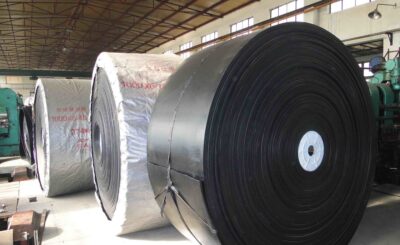Human resource management technology is everywhere these days. Whether it’s an app that tracks employee satisfaction, an algorithm that flags underperformance, or AI that screens job candidates faster than you can blink, technology has become a central part of how modern businesses manage people.
And it’s efficient. No more piles of paperwork or awkward mid-year reviews that go nowhere. Just data, dashboards, and decisions. But while HR tech can do a lot, can it lead?
As more businesses lean into automation and analytics, a bigger question has started popping up:
Are traditional managers becoming obsolete? Or more importantly, should we even be trying to replace them with tech in the first place?
The Rise of HR Technology: Efficiency Meets Intelligence
Human resource management automation has solved a lot of headaches.
A well-implemented system can help you:
- Automatically track employee attendance, leave, and overtime
- Digitise performance reviews and feedback cycles
- Provide real-time dashboards on team KPIs and productivity
- Flag potential issues like burnout risks or high turnover
- Simplify recruitment with AI-driven screening and matching
In theory, that’s incredible. With just a few clicks, an HRMS platform can give insights that used to take hours of data gathering and meetings. Everything is neater, faster, and more transparent.
And for growing companies, startups, or remote-first teams, these systems are a lifesaver. They help maintain structure even when teams are scattered across time zones.
So yes—there’s no denying the value. But here’s where it gets interesting…
Can Technology Really Replace the Role of a Manager?
Here’s where we need to get a bit more personal. While HR technology does a brilliant job at organising tasks, it’s not quite as strong when it comes to leading people.
Managers aren’t just there to check if deadlines are met or forms are filled out. They’re also there to:
- Spot when someone’s struggling—even if they don’t say it out loud
- Mediate conflicts between team members
- Motivate people when morale is low
- Coach employees through tough decisions
- Celebrate wins in a way that feels genuine, not programmed
These are things you can’t automate.
You can get a system that tells you John’s performance score has dropped 15% this month, but only a human can ask John how he’s doing and uncover that he’s overwhelmed from caring for a sick parent.
Data shows what’s happening. Managers figure out why and what to do about it.
So while it’s tempting to think we can rely on technology alone, the truth is that leadership is still deeply human.
Why the Debate Exists in the First Place
A big reason this conversation is happening now is because of how quickly technology has evolved. Some companies are already experimenting with algorithm-based promotions or AI-led performance feedback. In these environments, traditional managerial roles start to feel… obsolete.
And let’s be fair—not all managers are good managers. We’ve all seen or heard about the ones who micromanage, avoid giving feedback, or don’t show up when it matters.
So if HR technology can do the admin better, and some managers aren’t great to begin with, it’s easy to wonder whether we still need them at all.
But the solution isn’t to scrap managers—it’s to redefine their role.
The Best of Both Worlds: Collaboration Over Replacement
Instead of thinking about technology versus people, what if we saw it as technology with people?
Here’s what that could look like:
- Let technology handle the routine stuff. Attendance, shift scheduling, document filing, survey collection—these are things HR technology can do brilliantly, saving hours of time.
- Let managers focus on people. With that admin time freed up, managers can focus on one-on-ones, mentoring, coaching, conflict resolution, and team development.
- Use data to support conversations, not replace them. A manager might see an employee’s engagement score drop on a dashboard, but instead of reacting with a warning, they can use it as a starting point for a meaningful conversation.
This model empowers both sides. Technology handles the structure, and managers provide the soul.
What Businesses Can Do to Make It Work
If you’re leading a business or part of a team thinking about how to use HR management tools more effectively, here are a few things worth considering:
- Train managers to interpret and act on data, not fear it. Just because you’ve added technology doesn’t mean managers are useless. Give them the tools and training to use data meaningfully.
- Make people the focus. Don’t let automation become a barrier between teams. If anything, technology should open the door for better communication, not replace it.
- Ask your employees how they feel. You’d be surprised how often systems are implemented for employees, without ever talking to them. Include them in decisions about technology tools and how they’re used.
- Balance transparency with empathy. Just because you can track something doesn’t mean you always should. Use data ethically and with compassion.
Final Thoughts: Do We Really Need to Choose?
Let’s wrap this up with the big takeaway:
HR technology isn’t here to replace people—it’s here to empower them.
But only if we let it.
The real win happens when we stop thinking in extremes. It’s not about scrapping all managers and replacing them with systems, nor is it about avoiding technology altogether and doing everything manually.
The goal is a hybrid model—a smart, human-centred workplace where technology handles the logistics, and people handle the leadership.
So if you’re asking whether HR technology should replace traditional managers, maybe it’s time to ask a different question altogether: How can we bring out the best in both?








